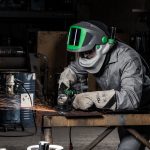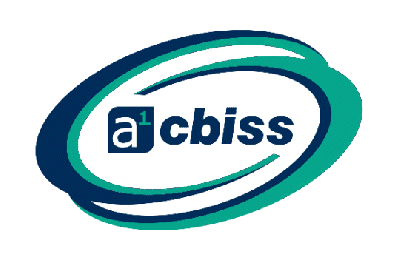Beards and facial hair will impede the ability of a respiratory face mask to achieve a good seal and will fail a face fit test. However, there is alternative protection…
Employees who have a beard or facial hair are NOT suitable to use tight-fitting respirators, therefore the recommended alternative is Powered Air Respirators. a1-cbiss list our respirators for beards and facial hair here.
If an employee cannot achieve a seal with a tight-fitting facepiece; there are two options;
1: The employee would either have to shave their facial hair or,
2: The employer would need to provide alternative protection.
In the case of point 2, the alternative would be a powered air respirator.
Powered Air Respirators, when worn with loose-fitting head tops, are a convenient alternative solution, allowing users to retain their facial hair and high levels of protection against hazards.
a1-cbiss supply two leading brands of Powered Air Respirators (PAPR), so what’s the Difference Between the 3M and the RPB Safety Range?
The 3M DURAFLOW
The DURAFLOW from 3M is a powered air respirator is designed to be sleek, and the modern ergonomic profile allows the user to experience enhanced comfort while working in a wide range of hazardous environments where it’s not safe to breathe naturally.
DURAFLOW features a durable body to withstand arduous environments and a range of design features including real-time airflow control; audible/visual alarms; standard/extended duration battery options (IP65 rated), LED operation displays.
The RPB PX4
 The RPB Safety range was initially designed for filtering out respirable dust in heavy industries such as welding and grinding applications.
The RPB Safety range was initially designed for filtering out respirable dust in heavy industries such as welding and grinding applications.
The PX4 features a 3 stage filter process for clean breathing air – Spark arrestor (only with FR version), pre-filter, high-efficiency filter cartridge. The PX4 puts in a shift too, it’s battery operates up to 13 hours on a single charge and has a quick-test button to view the current battery charge.
The RPB range of respirators has been designed to offer excellent value for money, going a step further with the design by wrapping multiple pieces of personal protection equipment (PPE) into one. By combining lighting, temperature control, communications, replaceable lenses and ultimate comfort in one convenient, up-to-date piece of equipment, you can reduce operational expenses while increasing productivity.
Head Tops
The actual PAPR for the two brands are very similar, the key differences are in the head tops
We would recommend 3M’s head tops for general industry use where head protection is not required. The head tops will cover the face and provide comfort to the user. But if you normally wear a hard hat or a welding visor, consider the RPB head tops as these provide both forms of protection.
3M’s Flowhood 1 (FH1) consists of a soft half hood cradle that covers the face and the top of the head. It provides a cool flow of clean air over the head and down the face. The FH1 is designed with a unique Neoprene chin seal, which allows intuitive and straightforward donning.
The Flowhood 2 (FH2) is an ultra-lightweight headtop similar to the FH1 but with the shoulder cape, providing neck and shoulder protection from chemical splashes or grinding offcuts. An internal drawstring provides a snug fit and is designed for applications where impact protection is not required.
The FH21 is very similar to the FH2 but comes in an anti-static material.
The Z4 is a welding helmet that has been designed to be comfortably worn for hours. The Z4 ® comprises of a crystal-clear grinding visor and a flip-up welding visor. The dual air distribution system delivers 75% to your breathing zone via a multi-directional outlet. The remaining 25% is directed over the grinding visor to prevent fogging.
The Z-Link offers numerous configurable options so that you can wear it your way. Designed to work for you – With five visor options, five cape options and four optional accessories. The Z-Link lets you add, change, or remove features as you choose.
The T-Link is a lightweight head top (similar to the 3M FH Series) used to protect against paint vapours, chemical inhalation or chemical splashes in painting or pharmaceutical applications.
For more information on Respiratory Protection, Read our Respiratory Guide












